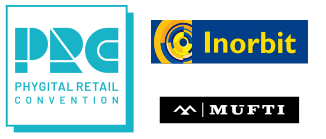
A look at why decision-makers across retail are looking at investing in RFID, a more than 50-year-old technology that has risen to prominence again
New Delhi: When Radio-Frequency Identification (RFID) was introduced over 50 years ago, it held a lot of promise, especially in an industry like retail that required precision in inventory management. Owing to its high costs, the technology didn’t see much adoption despite its potential.
However, the technology not only persisted but has evolved over the years to become more relevant and affordable, making it one of the preferred choices for retail decision-makers. A significant 58% of warehouse decision-makers plan to deploy RFID by 2028 which will help increase inventory visibility and reduce out-of-stock, according to the Warehouse Vision Study 2023 by Zebra Technologies, which helps organisations monitor, anticipate, and accelerate workflows with technology.
Furthermore, a majority of warehouse decision-makers plan to deploy fixed, passive or handheld RFID readers that can better track assets, workers and goods throughout the warehouse environment, the study found.
There are multiple areas where retailers are trying to use RFID to either enhance customer experience or reduce the cost of operations, say experts.
“RFID is a technology which is very old and going to have a huge impact in retail as it is now available and accessible,” said Ranjan Sharma, CIO and Supply Chain Head, of Bestseller India, a fashion and apparel brand.
Why RFID?
Retail operations pass through a series of steps from inventory to return management. Often, keeping track of all the stages manually becomes laborious and ends in errors and delays and impacts profitability.
According to recent data from Shopify, which helps small businesses build an online presence, inventory is the largest expense for retailers. For every dollar US retailers make, they have $1.40 of inventory in stock.
An inventory cost is the total of purchase costs, ordering costs, holding costs and shortage costs. Today, RFID plays an important role in managing these costs and the digital transformation of retailers especially with the rise of e-commerce, say experts.
How Retailers Use RFID
“RFID technology is typically used where there is a high volume of items moving quickly in and out of an area and where there is a high selectivity and multitude of sizes, colours and styles,” said Rajnish Gupta, VP & Head, India and Sub-Continent business, Zebra Technologies.
While experts have named inventory management as the most common use case of RFID, there are different areas where the technology has shown its results. These include:
Customer Experience
E-commerce giant, Amazon uses RFID to ensure customer satisfaction and ease of operations, its ‘Just Walk Out technology store,’ which first debuted in 2018 uses RFID to expand the potential for checkout-free technology to clothing, soft lines, fan gear, and more.

“Customers love being able to grab what they need and get on their way without having to wait in line, and store owners and retail operators have embraced the cost-efficiency and revenue-driving benefits of Just Walk Out technology,” said Jon Jenkins, Vice President, Just Walk Out technology, AWS Applications in a blog post.
Just Walk Out technology uses cameras, shelf sensors, sensor fusion, and artificial intelligence (AI) technologies, like computer vision and generative AI to enable retailers to sell a wide range of products, such as food, beverages, groceries, home goods, and more.
As per the data from Amazon, there are more than 70 Amazon-owned stores, and more than 85 third-party retailers with Just Walk Out technology located across the U.S., UK, and Australia.
Experts from Zebra Technologies told Phygital Bureau at the sidelines of the Warehousing Vision Study 2023 launch that the company recently launched a modern store which offers the best example of an RFID-enabled shopping experience.
Sharing one instance of how RFID is redefining experience, Sanjay Nare, Pre Sales Head – India & Sub Continents, Zebra Technologies said that as soon as a person tries on clothes, the RFID antenna detects the size and automatically gives options for matching apparel, and accessories.
This experience gets more interesting when a customer delves deep into the shopping experience finding various fits, sizes, designs etc.
Operational Efficiency
RFID has a lot of impact on improving operational efficiency. “RFID used to be ‘nice to have’, but with supply chain visibility and inventory accuracy becoming more crucial, it is now essential for today’s omnichannel companies,” said Saurabh Surya, VP – of Technology, Smaaash, a gaming and entertainment centre spread across India.
Speaking about how the brand uses RFID, Surya shared that before the adoption of the technology, Smaaash offered coins to play any arcade game that featured coinbox technology. However, handling coins used to be a laborious operation because cashiers had to keep an eye on the quantity.
With RFID, a single card to customers helps store the value charged that gets utilised after every single game played.
For Smaaash, one advantage of adopting RFID cards is their ease of use. It helps obtain comprehensive user statistics from the RFID card, including the number of games played, the category games the users prefer to play, the propensity for redemption, the number of FEC visits, and the visiting hours.
He added that thanks to RFID, the number of cashiers as well as the operations team size has decreased resulting in cost savings.
Store Management
A typical store opens and closes 30-45 minutes before and after customers come and leave to check inventory.
With RFID, this time frame is now just 10 minutes, helping store employees complete work faster and in a way easing the store opening and closing process.
This results in significant savings on manpower and overtime payments to staff.
Store Data Analytics
RFID helps keep track of the exact SKUs and their status. It can provide the exact number of items that have moved from the shelf to the trial rooms in a typical retail store.
This helps retailers get an idea of what customers prefer so they can rethink the placement of less moved items.

These insights into customer preferences help understand which product styles are fast-moving, and which are slow-moving, helping brands take action much faster than in the past.
Returns Management
Often, products that get returned are not added to the store inventory and remain unaccounted for in the warehouse.
This leads to losses and an erroneous view of inventory. With RFID, stores can get it back to the inventory much faster and ensure that it is back on the shelves.
Shrinkage Control
Shrinkage is the losses which retailers incur either in stolen goods or goods which get out of inventory and don’t come back into inventory.
RFID helps control shrinkage. And that can have a significant impact on replacing some of the systems like anti-theft systems. These technologies can all be combined into one significant savings in capital investments for retailers.
GI Tagging
Experts from Zebra added that a lot of work in RFID is happening around GI (geographical indication) tagging. For instance, clothing made from Egyptian cotton will have a tag that denotes that the cotton is actually from Egypt and not from somewhere else. GI tagging ensures the authenticity of the source of raw material for a product.
The Cost Factor
Gupta from Zebra says that, over time, the cost of implementing RFID technology has reduced significantly, making it more accessible for retailers of all sizes to adopt.
Although RFID has been around for some time, the cost of tags has come down dramatically only in the last few years.
According to Surya, the average cost of an RFID tag has decreased by 80% to 4 cents. “The ROI will be achieved in a maximum of two to three months,” he said.
Game changer
Over the past 10 years, the read accuracy of RFID has doubled and the range has more than quintupled (allowing for fewer devices and better scans). Today, the technology enables real-time visibility, heightened accuracy, and greater automation, which translates to vastly improved operational efficiency, time and cost savings and improved experience.
“RFID has use cases and capabilities to solve problems that we could have never thought of earlier. With pricing no longer a barrier, it’s going to become a game changer,” added Sharma of Bestseller.








